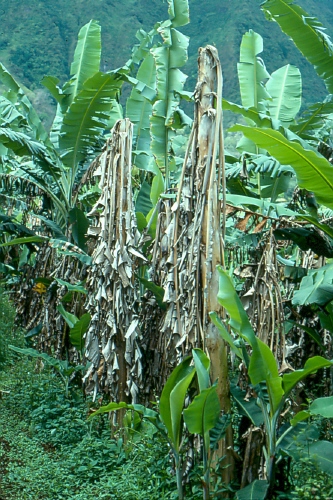
Preview
Material for Exam 1 - Fall 2008
Print
the PDF version (no pictures, better printing)
Use a #2 pencil to fill in the information on your NCS answer sheet. Put your OKEY ID in the boxes indicated for LAST NAME and darken the appropriate circles. Write your Name (Last,First) and “Star” or “No Star” in the space above the boxes containing your OKEY ID (depending on the form you have). Darken the (S) or (N) in the last column of the name circles. Enter the number 831 and darken the corresponding circles in the first 3 columns of the “Student ID.” Failure to perform this correctly will incur a -10pt handling fee. Read all questions and answers carefully before choosing the single BEST response for each question. Feel free to ask the instructor for clarification.
 source
sourceRecently, some individuals claimed to have found the remains of a “Big Foot” (a large, furry human-like creature) in Georgia, a warm southeastern US state. While taking a stroll through the north Georgia mountains, a Big Foot is chased by a pack of coon hounds. After several miles of running, Big Foot is able to lose the hounds and stops to rest and cool down. The night after being chased by the hounds, Big Foot (a homeotherm) decided to sleep outside instead of in his cave. During the night, the temperature dropped to 25°F (a rare occurrence).
Zebra mussels are a small clam-like creature that originated in Russia and were accidentally introduced to the Great Lakes in the 1980s. This species reproduces very quickly (females can produce more than 30,000 eggs per year) and has spread rapidly causing a variety of environmental problems. In the last few years, zebra mussels have been reported in several locations in Oklahoma. They can become densely populated and completely cover the bottom of a stream or lake, often smothering native freshwater mussels. They can grow in thick bunches within pipes, causing blockages and problems in water intakes of municipal water supplies and electric companies. Scientists are interested in the maximum temperatures that zebra mussels can withstand as this will help them predict how far they will spread into the southern US and the types of industrial pipes in which they can live in. To test the mussel’s temperature tolerance, scientists placed them in aquariums at their optimal temperature for growth (19°C) and two higher temperatures of 25°, and 31°C. For each temperature, 20 mussels were tested. After four days, scientist counted the number of mussels that had died in each pipe. Following the experiment, the scientist noted that no mussels died at 19° and 25°C. At 31°C, all mussels died. Zebra mussels can survive outside of water for longer than other mussel species.
 source
source source
source source
sourceChili (hot) peppers are one of the earliest crops to be domesticated in South America. It is suggested that the early domestication of chili pepper is related to their ability to prevent food infection by microbes such as bacteria and fungi. Before humans used refrigeration to preserve their food, food poisoning was more common in hot regions as compared to cold regions.
Scientists suggest that the production of capsaicin is a defense mechanism developed in some peppers to protect them from the fungus Fusarium that enters the fruit through punctures made in the fruit skin by insects. The fungus destroys the seeds in the fruit before they can be eaten and dispersed by birds.
To test the hypothesis that capsaicin protects the seeds, scientist collected fruits from wild plants and measured both the level of capsaicin and the viability (ability to germinate) of the seeds.
In order to test the role of natural selection in the production of capsaicin scientists collected wild chili peppers from seven different populations of the same species spread over 1,000 square miles in Bolivia. They selected peppers randomly and measured levels of capsaicin and scars caused by insect bites on the fruit surface.
An experimental site was selected at Yuma Agricultural Research Center in Arizona, to evaluate the effect of a new synthetic fertilizer on melon plant yields (the number of melons produced). Groups of ten plants were tested. One group received fertilizer treatments, while another group served as the control. Results indicated the group of melons receiving fertilizer had an increased yield.
When the Sphinx moth, Manduca sexta, flies, heat is produced by its flight muscles. When it flies at low ambient temperatures, its thorax (midsection), which is surrounded by a thick coat of scales, may be 23o C warmer than the surrounding air. At high ambient temperatures, the moth’s abdomen (hind section) can become nearly as warm as the thorax and acts as a thermal radiator (releases heat). (http://entomology.unl.edu/ent801/temp.html)
Dr. Gent-Papillion places several moths in 18oC air (low temperature), and makes them fly for 5 minutes. She then increases the air temperature to 30oC (high temperature), and continues to make the moths fly.
Potassium cyanide (KCN) is a common poison used by entomologists like Dr. Gent-Papillion to kill insects for collections. One observes that O2 use stops immediately when insects are exposed to KCN.
Near a gold mining operation, where KCN is used to extract gold from ore, a population of bacteria has become tolerant KCN in the soil.
 source
source source
source


